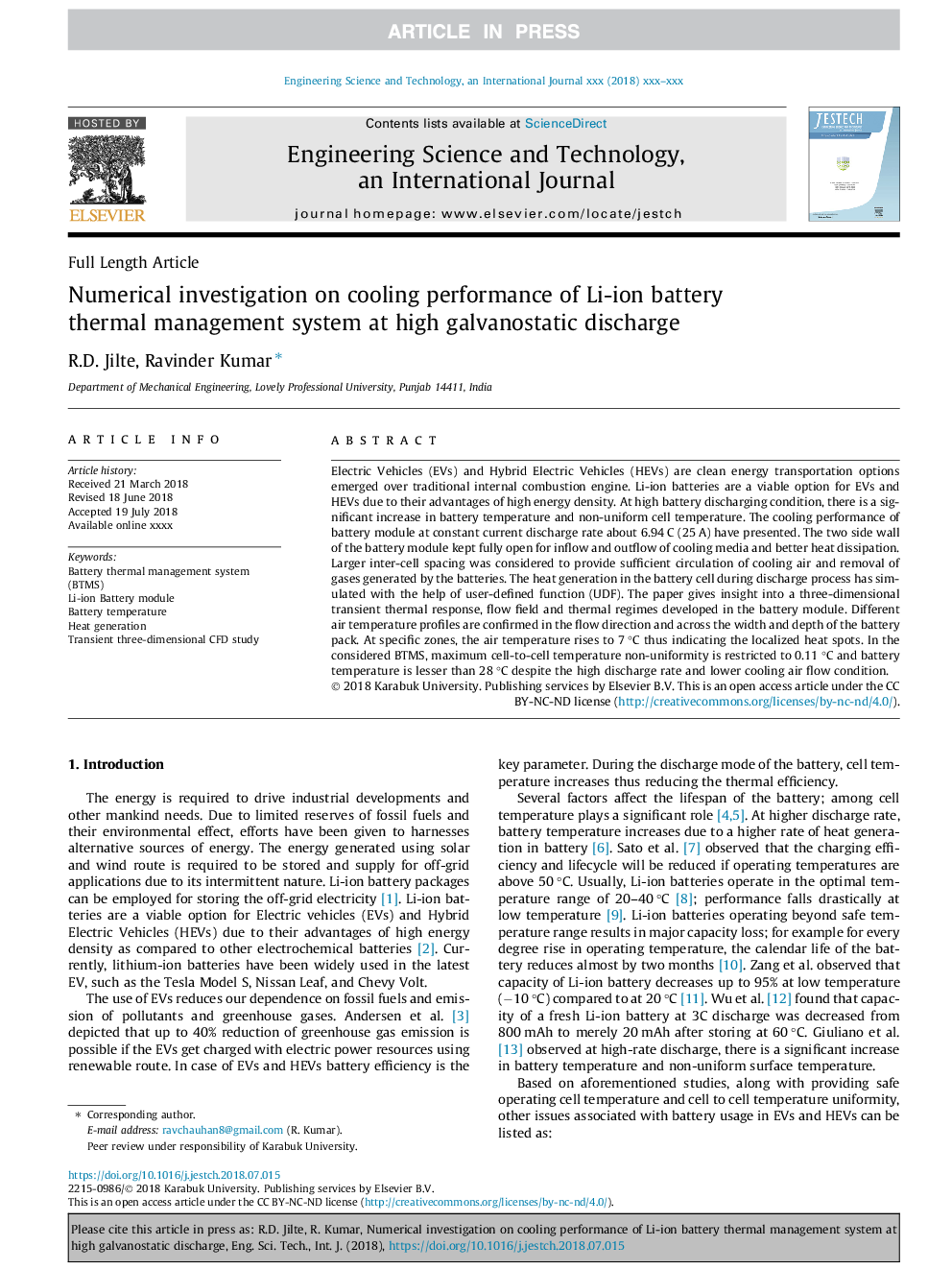| Article ID | Journal | Published Year | Pages | File Type |
|---|---|---|---|---|
| 11021057 | Engineering Science and Technology, an International Journal | 2018 | 13 Pages |
Abstract
Electric Vehicles (EVs) and Hybrid Electric Vehicles (HEVs) are clean energy transportation options emerged over traditional internal combustion engine. Li-ion batteries are a viable option for EVs and HEVs due to their advantages of high energy density. At high battery discharging condition, there is a significant increase in battery temperature and non-uniform cell temperature. The cooling performance of battery module at constant current discharge rate about 6.94â¯C (25â¯A) have presented. The two side wall of the battery module kept fully open for inflow and outflow of cooling media and better heat dissipation. Larger inter-cell spacing was considered to provide sufficient circulation of cooling air and removal of gases generated by the batteries. The heat generation in the battery cell during discharge process has simulated with the help of user-defined function (UDF). The paper gives insight into a three-dimensional transient thermal response, flow field and thermal regimes developed in the battery module. Different air temperature profiles are confirmed in the flow direction and across the width and depth of the battery pack. At specific zones, the air temperature rises to 7â¯Â°C thus indicating the localized heat spots. In the considered BTMS, maximum cell-to-cell temperature non-uniformity is restricted to 0.11â¯Â°C and battery temperature is lesser than 28â¯Â°C despite the high discharge rate and lower cooling air flow condition.
Keywords
Related Topics
Physical Sciences and Engineering
Computer Science
Computer Science (General)
Authors
R.D. Jilte, Ravinder Kumar,
